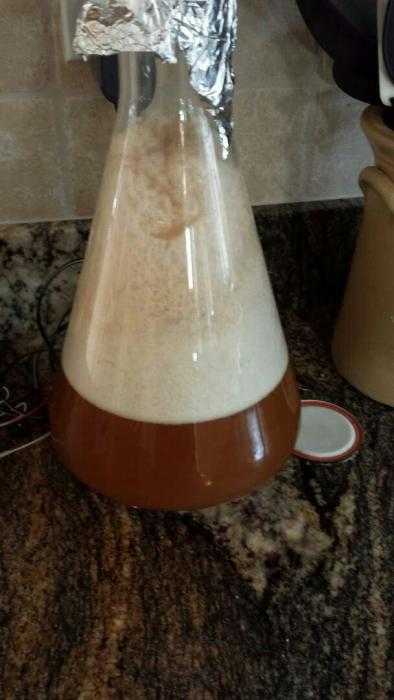Since I never received any replies from anyone, nor did I ever manage to track down information, I wanted to post my results with this yeast in order to help people in the future.
The Allagash White yeast starter was very active, as you can see from the previous picture, and the starter tasted really good for a starter. I pitched more than enough into a 6 gallon Witbier that I brewed.
I kept the fermentation schedule close to what I was finding for other belgian strains like WLP400. I fermented at 69F for the first 4 days, raised to 71 for the next week. Fermentation was quite vigorous and had a slight smell of sulfur. The krausen did not want to settle down, even after 2 weeks, until I dropped the temp to 50, even though the FG was maintaining a steady reading.
After a week, I tasted the beer, and it tasted good, except had an awful band-aid aftertaste. I waited another week thinking it might clean up a bit, and still had the same flavor. When I dropped the temp to 50 for a few days, it got better, but still has that flavor to it.
Researching into this, I found posts mentioning the following potential causes of phenols that taste like band-aids:
- Chlorine - I don't think this was the cause of my off flavor, I filtered my tap water, and have never had problems with this off-flavor even when I dont filter.
- Brett Infection - There are no visible signs of infection, and I'm not sure how to tell if this could be the cause. I have never had an infection and am quite OCD about sanitation, so don't think this is the cause either.
- Belgian Yeasts at too high of a temp - I didn't find much mention of this happening to people, but did find a post or two saying this. I'm thinking this could potentially be my problem, even though I feel like 68-71 is not too high of a fermentation temp for a belgian yeast.
I wound up emailing Allagash to ask, and this was a snippet from their response:
Thanks for the interest and always glad to hear from someone who enjoys brewing! Unfortunately, your problem was probably just tired yeast, after going through a full fermentation and sitting in the bottle, it just wasn't going to make the best crop. If you're looking for a yeast that's similar, we've seen good results with Fermentis T58 dry yeast (
http://www.fermentis.com/wp-content/uploads/2012/02/SFBT58.pdf).
They didn't answer my question directly, as many breweries love skirting around answers, so I thought I would provide everyone here with the info I have come up with.
I am going to try lagering the beer for a while and hope that the flavor fades enough for it to be drinkable. I was making this for a party at work in a couple months, so I guess I will have to try again with a commercial yeast until I can experiment more with the Allagash yeast.
My inclination is that the problem is really the temperature, and not what Allagash responded with. The starter tasted really good with no off flavors, which it would have fermented at room temp (60ish).































![Craft A Brew - Safale S-04 Dry Yeast - Fermentis - English Ale Dry Yeast - For English and American Ales and Hard Apple Ciders - Ingredients for Home Brewing - Beer Making Supplies - [1 Pack]](https://m.media-amazon.com/images/I/41fVGNh6JfL._SL500_.jpg)
















